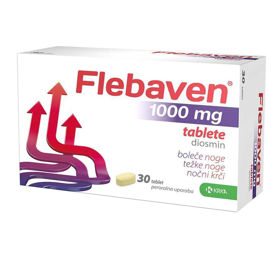Customer question:
Why do my legs swell? Is this lymphedema?
Pharmacist's response:
Leg problems such as swelling and discoloration affect many people worldwide, and peripheral vascular disease (PVD) is one of the leading causes.
The vascular disease manifests itself in several ways. However, edema and discoloration of the legs are the two main symptoms.
Discoloration and edema (swelling) may indicate problems with blood circulation in the legs, including venous disease and lymphedema. The lymphatic systems and veins drain blood back to the heart in the portions. The lymphatic system filters the clear fluid (lymph) and sends it back to the venous system to be carried back to the heart.
Swelling of legs
This condition can lead to leg swelling when dealing with a specific type of vascular disease. It starts at the ankles and spreads up the legs, especially if you don't seek medical attention. On the other hand, if you suffer from chronic leg swelling, you may have problems returning blood from the veins, causing blood to pool in the legs. In both cases, leg swelling can cause pain and discomfort and lead to severe complications.
In diseases of the veins (venous insufficiency), the blood does not flow properly through the veins back to the heart. Venous insufficiency can result from poor drainage from the superficial veins or a blockage that prevents proper blood flow from the deep veins. The blood collection thus causes an increase in the pressure in the veins - the consequence is the extrusion of the intercellular substance of the veins from the venous system into the tissues under the skin, which causes visible swelling. This increase in pressure can also put additional strain on the lymphatic system.
Edema most often occurs in the lower part of the legs or around the ankles. In most cases, the swelling is worse on one leg than the other. Swelling is usually aggravated by prolonged standing or sitting; the condition is often improved by elevating the leg.
A common diagnosis is a lymphedema in cases where the lymphatic system is affected. Lymphedema can cause foot swelling, and the edema can persist even with an elevated leg. Lymphedema and venous disease often occur in a disease process known as phlebolymphedema. This happens when the pressure in the veins increases due to the accumulation of blood (venous hypertension), making it impossible for the lymphatic fluid to drain from the lymphatic system.
Swelling of the legs is a more common symptom of a vascular disorder. Your legs swell when the pressure in the capillaries is higher than that of the surrounding fluids, especially the lymph fluids. Detralex is intended to treat symptoms of chronic vein disease, lymphedema, and acute hemorrhoidal diseases in adults.
Other causes of swelling and discoloration can include increased salt intake in the diet, side effects of medications, previous surgeries, hormonal imbalances, and organ dysfunctions. Swelling also worsens during warmer weather.
Interesting reading: Stiff legs
Interesting reading: Swelling of the leg - CAUSES











